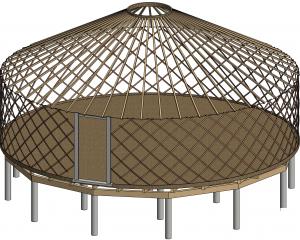However, that figure was little more than an estimate, with the real cost "extremely difficult" to determine.
The corporation has lodged an application with the Queenstown Lakes District Council to extend its noise boundaries, catering for growth forecasts to 2037.
Up to 80 houses fell into two of the noise boundary areas closest to the airport, and the corporation said it would pay to install acoustic insulation up to an acceptable standard in living and sleeping areas.
Yesterday, Mr Sanderson said it was extremely difficult to put an accurate figure on the cost.
It was possible for a property to be within a noise boundary, but not yet affected by the "actual, specified noise".
Queenstown Airport Corporation was required to monitor and model the noise annually.
That monitoring would be used to trigger installation requirements for properties affected, "prior to the actual noise reaching them".
"Therefore, the insulation programme can be spread over several years, as the noise monitoring expands into the forecast boundaries.
"Some of those houses may not be affected until 2037."
Some houses may require all of the insulation work, while other new houses may require nothing.
The insulation requirements were similar to what was already included in the QLDC's district plan for new dwellings, and covered external walls, windows and glazed doors, pitched or skillion roofs and external doors.
Mr Sanderson said he had a "worst-case scenario" figure but declined to disclose that.
He said Queenstown Airport Corporation "may spend $100,000 per year for the next 15 years", but the recession could also have an impact on the insulation programme.
Flight numbers could remain stagnant until the economy recovered, which would make the insulation programme cheaper, as the forecast growth might not be met.
If the helicopter and general aviation site stayed where it was, several Douglas St properties would be affected.
But if the operations moved - which was an option - those properties would not require insulation.
Also unclear at this stage was how the work would be carried out.
If the plan change was approved by independent commissioners, it would be included in the Queenstown Lakes District Council's District Plan.
• Several residents spoken to by the Otago Daily Times said they still had concerns about the possibility of night-flying and related noise.
Graham Toms, a Frankton resident of 30 years, said he decided not to make a submission on the application but still had questions about night flying.
"There's a safety factor, even with navigational aids.
I can't help [but] question whether it will be safe."
Another resident , who declined to be named, said she was concerned about noise relating to night flying, but the airport was an important piece of infrastructure.
"When we came here [20 years ago] it was pretty quiet. Now you can't sit outside. The jets are getting bigger and bigger and more and more.
"But, I suppose, that's progress, and the town's very reliant on tourists," she said.
Aaron Lodge owner John Littlewood had concerns about the impact might flights might have on guests.
Tom Butters wanted more information, particularly on the acoustic insulation.
"I find it quite bizarre that they are going to go into people's homes to soundproof them. The cost must be huge," he said.











